Egypt: Museums to remember
Fatemah Farag , Friday 9 Jul 2021
The Museum of Civilization and the Grand Egyptian Museum are valuable additions, but what happens to the old institutions as we enthusiastically herald in the new?
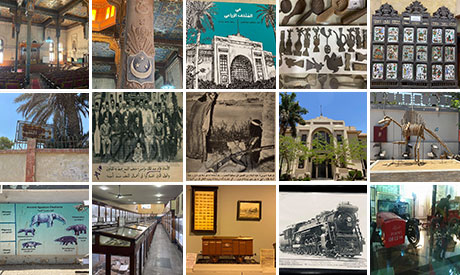
The guard rushes to block my entry through the gate.
Guard: Where do you think you are going?
Me: Into the museum.
Guard: What? But why? What is your angle?
Me: It is a museum open to the public and I want to see it?
The guard is engulfed in a bemused silence.
Time and again I am struck by the popular notion that heritage sites and museums are primarily for tourism and less so for our public. How unexpected it is for an Egyptian – not to mention, a woman on her own – to show up at a museum door.
Especially a museum as obscure as the Ethnographic Museum, which is housed within the Geographical Society on shared property with the Council of Ministers.
I am told the museum is closed and open only twice a week. When I return a week later I am told it is closed for "renovation." When I persist, I am told it had just closed and to call them later. When I still do not leave I am told to sit down while my ID card is scanned, logged in, and a security permit is issued.
Once I am in I find that three main halls are closed; the man with the key has not shown up for some time. A weary employee tells me this is due to "Corona."
The employees on hand flip open some lights and let me walk through the halls.
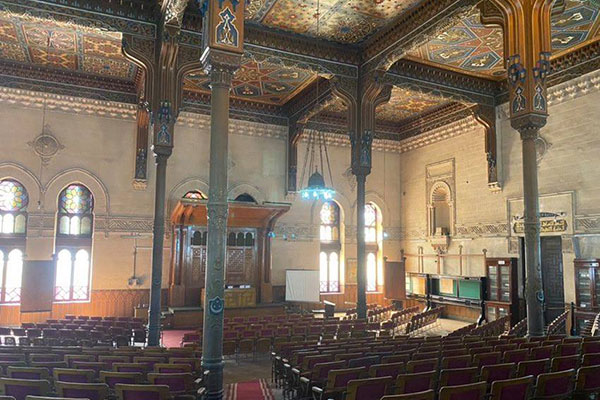
The Society was established in 1875 by Khedive Ismail and was the ninth of its kind across the globe, and the first of its kind outside of Europe and the Americas. The Society moved to its current location in 1925 and under towering wood paneled engraved ceilings held up by columns minted in Paris and engraved with the symbols of the Egyptian flag. Towards the back, a library continues to be home to a priceless collection of books and maps.
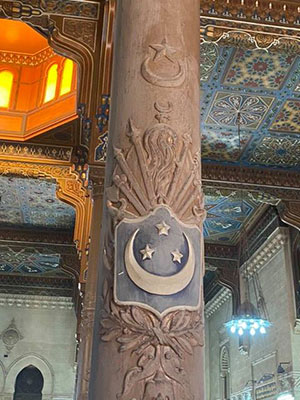
"When Egypt was at the International Court proving its jurisdiction over Taba, the Ministry of foreign Affairs sent its lawyers here to find the original map that was key in proving our rights," explains an employee as she heads to her desk. "While we have no resources to upgrade facilities we do the best we can to protect this invaluable heritage," she adds almost as an after-thought. The neglect, it seems, has become second nature. And the map? "We never saw it again."
On the ground floor of the building is the Museum of Ethnography which includes an Africa collection and elements of the daily life of Egyptians back to the 18th century.
I am gushing over samples of cookie cutters in a display case adjacent to panels of traditional tattoo art and getting ahead of myself.

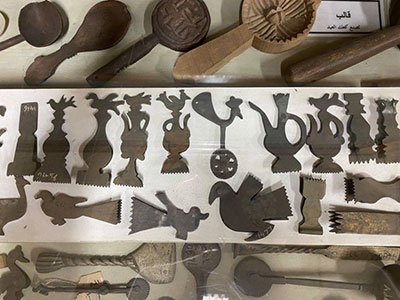
Our heritage beyond the pharaohs
Maps, bugs, paintings, engines, a piece of the moon, stamps and much more reside in museums we often neglect to remember. In 2019 the government's Central Agency for Public Mobilisation and Statistics (CAPMAS) counted 77 museums across the country, mirrors big and small into a complex and rich past.
Some, such as the Stamp Museum, Railway Museum and Museum of Geology were the among the first of their kind in the world, the first on the African Continent and the first in the Arab World.
The importance of this heritage in all of its diversity can't be understated. According to UNESCO, "Museums are not only places where our shared heritage is preserved – they are key spaces of education, inspiration and dialogue. They play an essential role in fostering social cohesion and a sense of collective memory. They hold up a mirror to society, introduce visitors to alternative points of view and foster creativity, respect for diversity and a culture of peace."
And this importance is further enhanced by their being centers for tourism and job creation.
A number of these museums are under the supervision of the Ministry of Antiquities and according to specialists these often have the most resources. Others are run by private entities such as the Museum of Ethnography and yet others by various ministries such as the Ministry of Agriculture.
To date in Egypt there are no unified standards for museum management or for their renovation, a worrisome thought perhaps as several landmark museums have been shut down for years for renovations. Does this lack of unified oversight and standard open the door to destruction of the buildings themselves and/or potential loss of collections to neglect, mis-management or even corruption?
Derelict in Helwan: The Egyptian Wax Museum
In the early 1930s prominent Egyptian artists Fouad Abdel-Malek studied waxworks in France and England and upon his return to Egypt enthusiastically went to work on setting up the Wax Museum. In this pursuit he was joined by other renowned artists of the day such as Bikar and in 1934 they founded the first iteration of the Wax Museum of Egypt at Tigran Palace on what is now Gomhoria Street. The museum then moved to a villa on Qasr El-Eini Street, which was eventually demolished at which point the museum made its final move to the Greater Cairo district of Helwan in 1956 where it continues to exist under the auspices of the Ministry of Culture.

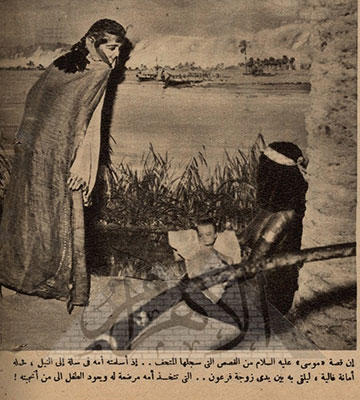
A brick wall surrounds extended grounds overgrown in weeds and dotted with sculpture. A one-story building flanks the left of a half-open gate leading into the property. The few employees sitting at a metal desk at the entrance tell me "The museum has been closed since 2009. For renovation."
In many parts of the world wax museums remain popular and attract millions of annual visits. Perhaps the most successful is that of Madam Tussauds in London which now has franchises across the globe, including the latest which opened in Dubai just last year.
The Egyptian Wax Museum which has been left derelict – and probably melting? – is reported to include 26 panoramic views and 116 wax sculptures. According to reports in the press and online, the collection includes shrines and samples of traditional dress, representations of religious, social and historical scenes and events such as the Virgin Mary with Jesus at the cave of Abu-Serga in old Cairo and the last moments in the life of Egypt's Queen Cleopatra among other attractions.

"We get a lot of people like you who check the internet and see that it says we are open and only when they come find out it has been closed for so long. A lot of Arabs especially before COVID," the people at the gate tell me.
Well now the Arabs have their own in Dubai which is open for business I guess.
"If you are interested in historic things go to the corniche – there is a King Farouk locomotive that is very nice," they add trying to be helpful in the face of my obvious consternation.
Renovation at the Station: The Egyptian Railway Museum
I do go to see a locomotive but not on the corniche. Walking through the doors of the Egyptian Railway Museum I sigh in relief. The museum has been recently renovated and is open to the Egyptian public for a 5LE ticket. I am met by a smiling administrator who also sells me a guide book.
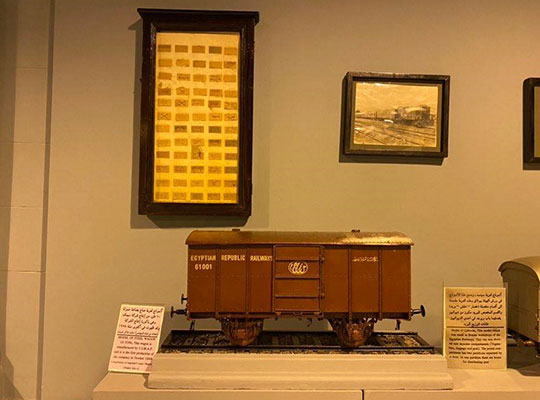
You do not have to be a railway buff to appreciate the relevance of the collection that resides at the Cairo Railway Station – a landmark in itself as it was the first station of its kind to be built in Africa.
The museum was established in 1933 on the occasion of Egypt hosting the 13th International Railway Congress and was the first museum of its kind in the east.
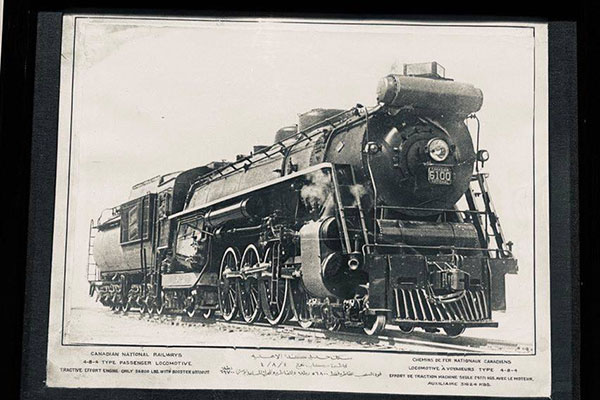
Today it includes some 700 items that document transportation from Pharaonic times through to the invention of the steam engine and the development of the infrastructure – such as bridges and stations – to facilitate the growth of rail in Egypt. It also includes several items that were donated by museums in the UK in the last century such as the first steam engine donated by the city of Birmingham in 1932.
The museum is also home to a library which includes original documents and maps related to the railway and an impressive collection of books for the railway buff
Histories of communication and transport: The Egyptian Postal Museum
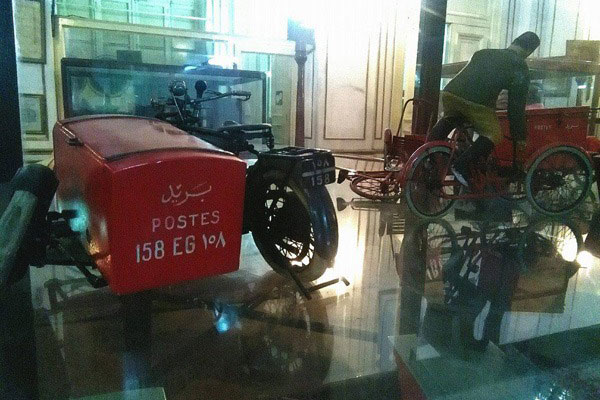
Staying within the theme of mobility I head to Attaba Square to visit the Egyptian Postal Museum which is indeed closed for renovation. Construction work around the historic building is underway and employees on site say the long-awaited inauguration including the museum will take place this month.
You might not think so but mail has a long and vivid history. The development of an international postal service required the drafting of numerous treaties, resulted in innumerable cross-border complications which required the convening of international conferences to discuss and resolve. The first of these was held in Paris and the tenth came to Cairo in 1934, which was the occasion of the inauguration of the Postal Museum, which was opened to public viewing later in 1940.
According to official statements the renovation will allow the postal authority to put on display items previously in storage for lack of space within the original museum structure.
Prior to this current renovation the collection was already rather impressive, including the first airmail letter to arrive in Alexandria, samples of official clothes worn by postmasters, a unique stamp archive including some of the oldest stamps in history, to name a few of the attractions.
So, keep your eyes on Attaba and hopefully we can all visit the collection soon.
From the moon to the Egyptian Elephant: The Museum of Geology
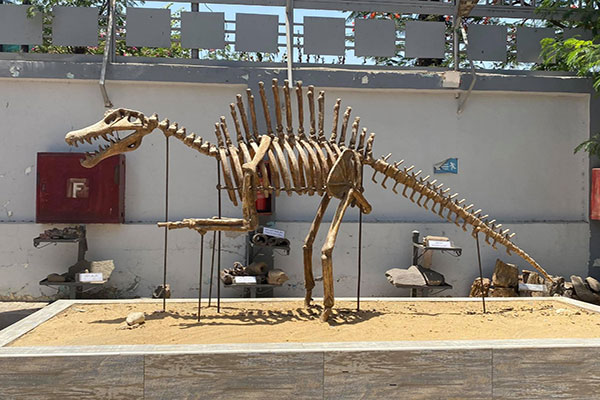
What can happen when a collection is removed from a historic building? In the case of the Museum of Geology the result is a wasted collection and history.
Established 1901 in the gardens of the Public Works Ministry (on what is today Sheik Rehan St.), pictures of the old building are hard to come by. But descriptions that can be find allude to a beautiful and striking structure which was torn down in 1982 to make way for the underground metro.
So, I head to the Maadi Corniche where an unassuming entrance leads me to a side door covered in metal bars which is now the entrance of the museum. Inside, rows of old wood cases stretch out uninvitingly as lazy ceiling fans spin.
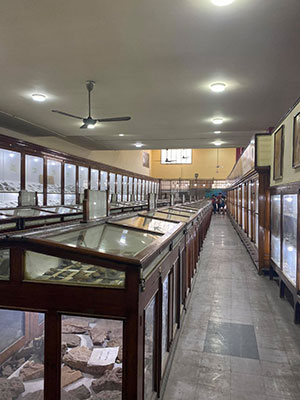
This Museum was the fourth of its kind globally and the first in Africa and the Middle East. You can read all about it in a book sold onsite for 30LE, which will also tell you that museum officials have repeatedly attempted to move the collection to "an appropriate building or get a new museum built," but that they have been faced by a consistent lack of resources.
But in spite of the disappointing structure the museum is a constant reminder that our geological heritage is worth our attention. For example, there is a moon rock on display, in addition to fossilised vertebrae mammals discovered in Fayoum. They were sent to England for identification and then promptly returned to Egypt to be displayed at the museum.
How about that for a historic twist?
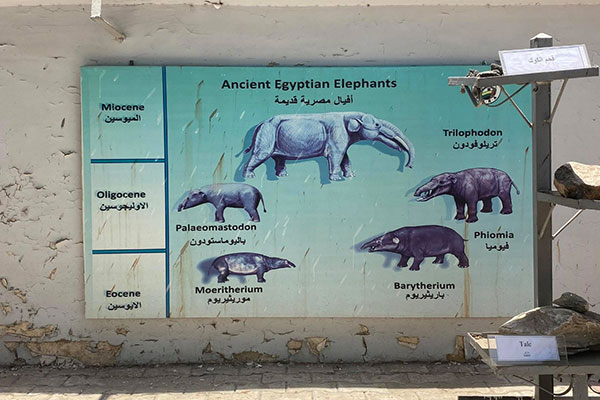
The biggest of them all: the Agricultural Museum Complex
Established in 1932, the Agricultural Museum is in fact a complex comprising ten museums that not only cover various aspects of Egypt's flora and fauna but include unique collections of cameras, paintings and sculpture to mention but a few of the exhibits that were on display.
Today the museum complex is closed "for renovation" and has been for some three years with no opening date in sight. In 2019 the Minister of Antiquities and the Minister of Agriculture visited the museum to select items that would be moved to the Civilizations Museum. The argument made then was that these exhibits when moved to the new museum would in turn attract people to the Agriculture Museum.

This has not happened yet and the majestic buildings of the museum stand among 30 hectares of what were once lush gardens, which are now plots of weeds. Staff fear that the remaining trees on site – one of them the only pinus of its kind in Egypt – will die for lack of care. There have also been complaints that some of the buildings have been used by by film crews, resulting in undocumented destruction of property. There have also been complaints in the press by citizens about the area because garbage has collected in the area.
However, if you want a glimpse into why this is such an amazing site there is a guidebook written by Ibrahim Abdel Aziz and illustrated by Mohamed Wahba released by Al-Balsam Publishing House, which will walk you through the various halls of the ten museums.
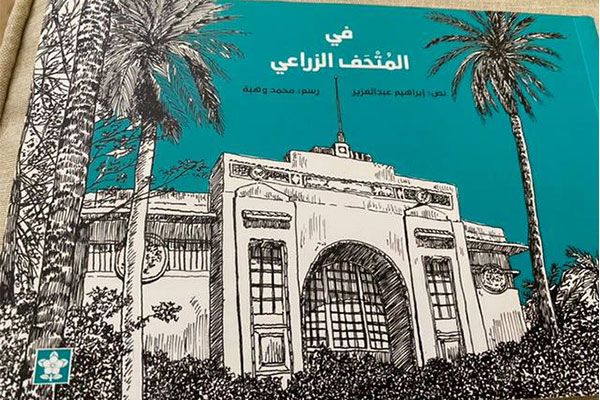
Why bother? At the Herbarium, which is at the end of the complex and remains open, a plant taxonomist explains that "throughout the year the museum would receive a continuous flow of school trips and families. This museum was the connection of all of those generations to an unknown part of who we are: our plants, our animals and more. And it did so by connecting new generations with the generations who established these buildings and these collections. This museum with its affordable tickets and long history can't be simply replicated and its loss is a loss of memory for new generations."
We have a saying in Egypt that those who lose sight of their past cannot walk confidently into the future. As I leave the invaluable collection of the Ethnographic Museum in its darkened, dusty halls behind me and walk out onto the Kasr El-Eini Street I am blinded by the bright sun, the rushing traffic and noise of the city. And I remember that we must always plant our feet solidly on the ground, resist the blindness and remember who we are.
-- Sent from my Linux system.
No comments:
Post a Comment